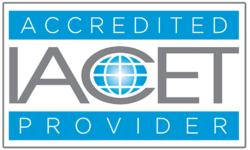Hermann Ebbinghaus (1850 – 1909) was a German psychologist who made groundbreaking contributions in the field of memory research. Two of his most famous discoveries, the forgetting curve and the spacing effect, can be effectively applied to student learning. Teachers can consider these ideas when attempting to provide the optimal learning environment for their students.
The Forgetting Curve
The forgetting curve is a visual representation of how much information is lost over time when no attempt is made at retaining the new learning. In 1885, Ebbinghaus conducted an experiment in which subjects were asked to memorize a list of meaningless three letter “words,” and then he kept track of how long it took for them to forget the words. The graph he plotted, shown below courtesy of Purdue University, illustrates how quickly new information is forgotten:
Teachers are all too familiar with the forgetting curve, as it tends to be obvious each fall after students return from summer vacation. Even students returning from a winter break might need to be re-taught previously mastered concepts. Providing students with opportunities to revisit material learned earlier in the school year can help diminish the impact of the forgetting curve, allowing them to retain more information.
The Spacing Effect
Ebbinghaus’ spacing effect describes the fact that learning experiences spaced out over time have a greater effect on improving retention than those that are grouped closely together. Chances are that instead of pacing ourselves and studying over a period of time, we have all “crammed” for a test, only to realize that most of the information was long gone when it was time to recall.
In the same way that “cramming” is not conducive to long-term retention, teaching instructional units separately in a short timeframe and never referring back to previously covered material is not conducive to long-term retention, either.
Those of us in the field of education are always looking forward, seeking the next big thing–the 21st century silver bullet that will magically improve student learning. But in this case, looking instead to the past, even back to the 19th century, might be of great benefit to our students.
In looking at the forgetting curve, how might you alter your instructional methods to accommodate for the loss of information over time?
What might you do differently in your classroom to maximize the spacing effect and increase content mastery for your students?
As an aside, it’s also worth mentioning that Ebbinghaus created one of my favorite illusions, seen below. The central circles are the same size.
Did you know our Focused Instructional Model (FIM) is designed to accommodate the forgetting curve and spacing effect? Click here to learn more about the FIM process and here to see examples of the phenomenal increases in student achievement FIM has brought to hundreds of classrooms.



